9 Amazing Posters From the Golden Age of Magic

A forthcoming museum exhibit showcases the advertising used by the likes of Harry Houdini, Adelaide Herrmann, and other turn-of-the-century performers.
Harry Houdini didn’t simply employ magic tricks to stack his crowds with people, he also used good old-fashioned advertising. The incredible posters and handbills that lured customers to shows during the Golden Age of Magic—the 1880s to the 1930s—were a form of art in their own right. Some of the stunning artwork that announced appearances by Houdini and other master magicians, like the renowned Thurston the Great, will soon be on display at the McCord Museum in Montreal as part of Illusions: The Art of Magic.
Curated with the help of David Ben, a magician and magic historian, the exhibition draws from the museum’s unparalleled collection of 600 posters and 1000 handbills, programs, autographs, rare books, and other documents from the era. Here are just a few of the 71 posters that will be on display:

Magic's Golden Age coincided with the rise of chromolithography, which rose in popularity in America after the Civil War as a cost-effective way to make colored prints.
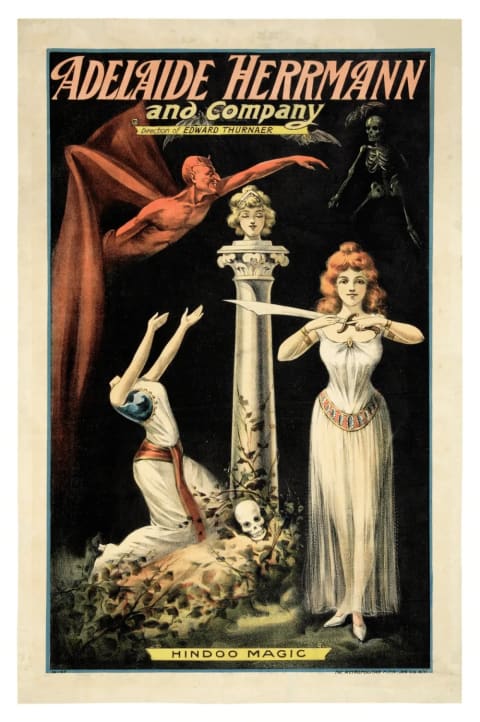
Adelaide Herrmann began her career as an assistant to her husband, the magician Alexander Herrmann. After his death in 1896, she continued performing, eventually becoming known as the Queen of Magic. She famously performed the “bullet catch” trick, in which she appeared to catch bullets fired at her, and may have been the only female magician of her time to do so.
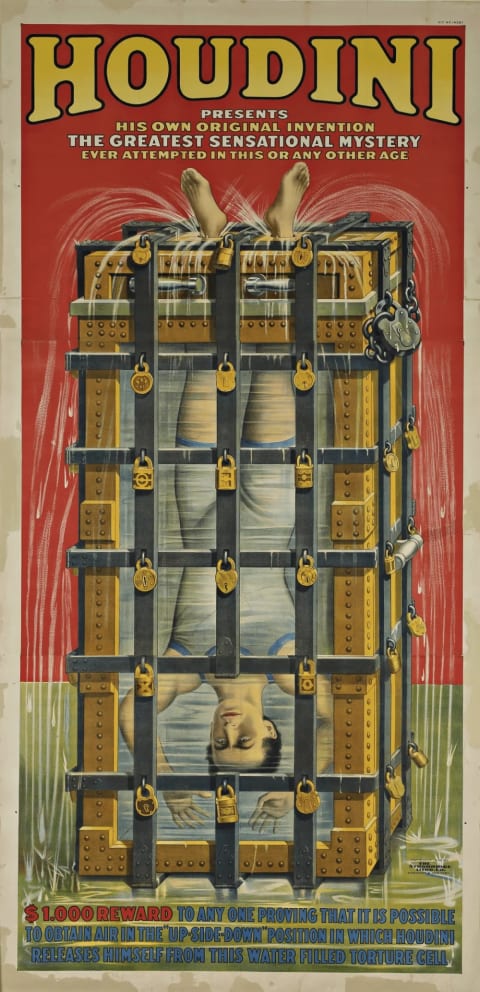
Perhaps Houdini's most famous trick, the Water Filled Torture Cell (sometimes called the Chinese Water Torture Cell) required the magician to escape from a tank of water while hanging upside down with his feet secured in stocks. The magician David Copperfield currently owns the restored cell Houdini used in his performances.
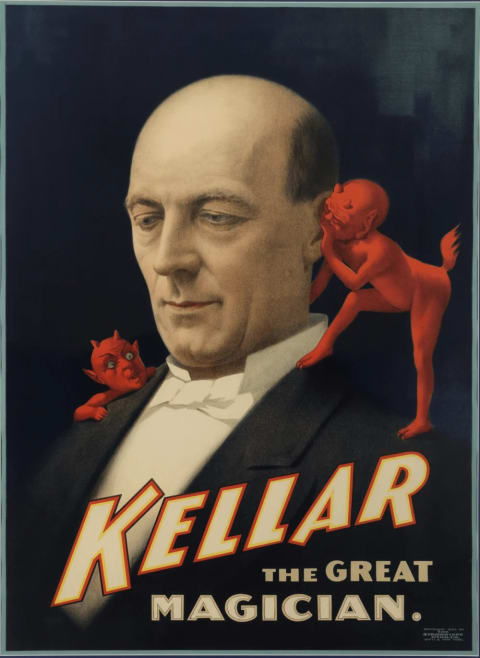
Harry Kellar was known as the Dean of American Magicians, and Houdini cited him as his greatest influence. Other magicians weren’t quite as laudatory. Kellar feuded with Alexander Herrmann, whose talents he feared would overshadow his. The rival magicians would paper over each other’s posters when they were performing in the same place, fighting to draw the biggest crowds.
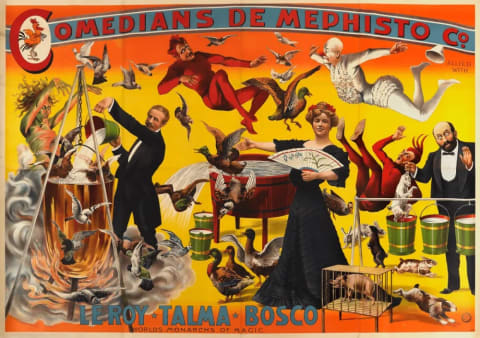
The Comedians de Mephisto Co. consisted of married magicians Servais Le Roy and Mercedes Talma as well as Bosco, a character invented by Leon Bosco and played by various other comedians after he left the group. Le Roy and Talma were best known for creating the classic Asrah levitation illusion.
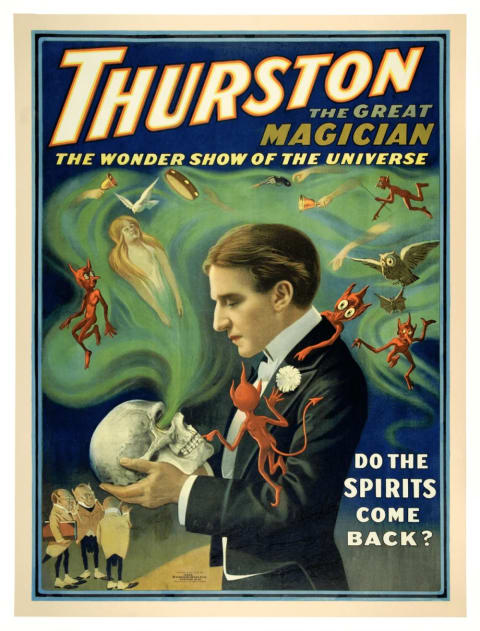
Howard Thurston, who was inspired to take up magic by watching Alexander Herrmann’s show, later partnered with Harry Kellar. But Thurston went on to become much more famous than either. Though Houdini is much more well-known now, Thurston was much more famous at the time. He was known as the King of Cards, but the real centerpiece of his act was the Levitation of Princess Karnac, a levitation trick pioneered by Kellar.
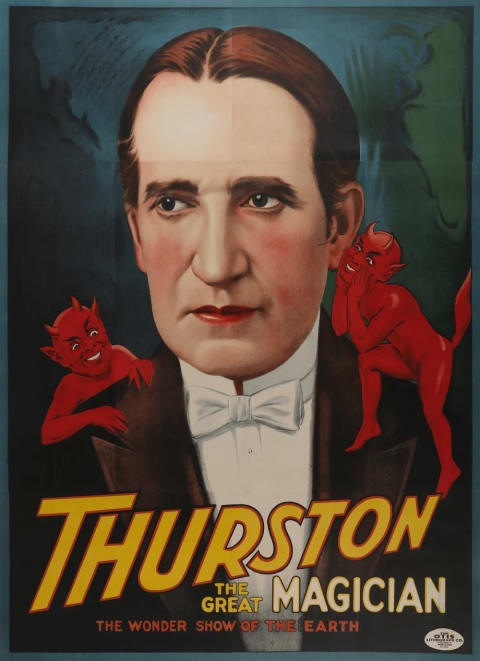
Thurston even made it into Dale Carnegie’s iconic How to Win Friends and Influence People. After Carnegie interviewed Thurston, he observed that “he had the ability to put his personality across the footlights.” Carnegie wrote that it wasn’t an extraordinary knowledge of magic, per se, that catapulted Thurston to stardom: “He was a master showman. He knew human nature. Everything he did, every gesture, every intonation of his voice, every lifting of an eyebrow had been carefully rehearsed in advance, and his actions were timed to split seconds.”
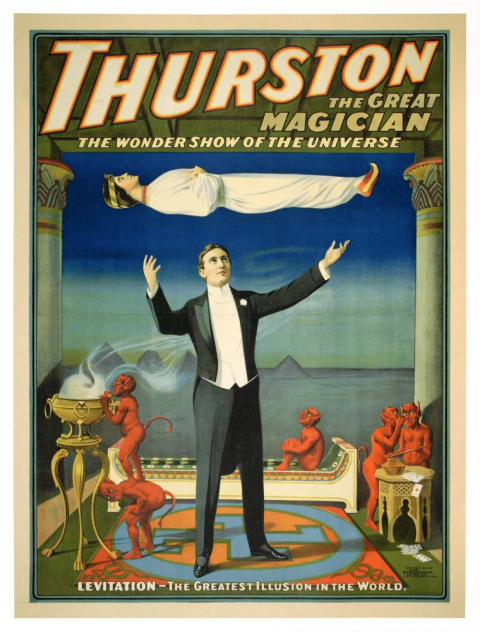
Thurston patented several of his signature tricks, including the levitation act.
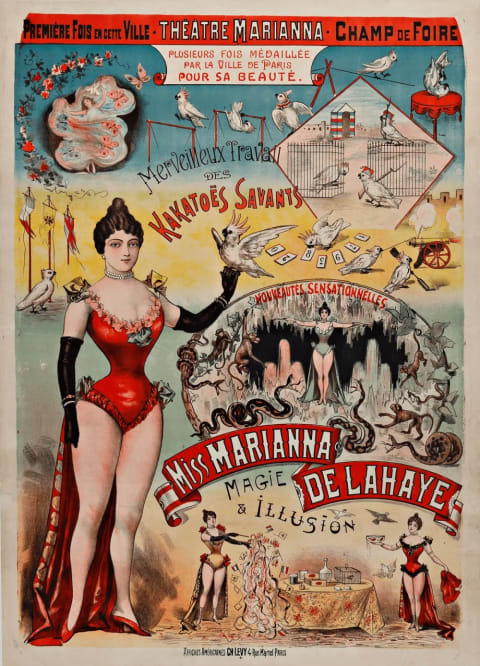
Illusions: The Art of Magic runs from May 26, 2017 to January 7, 2018.